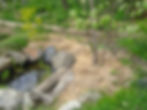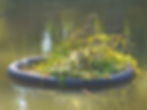
for the Resilience of African Food Systems in the Climate Crisis

Lecture 1
Diversity Saves!

Biodiversity is the common heritage of all humankind and our planet's safety net. The UN has warned that biodiversity is at a critical tipping point. Over the past century, the average number of local species in most major terrestrial habitats has declined by at least 20%, and the number of agricultural crop varieties has fallen by 75%.[1]
The variety of ecosystems, species, and genes surrounding us is vital. It provides us with countless ecosystem services we rely on daily, such as food, drinking water, pollination, and flood protection. [2]
Biodiversity in a garden is the cornerstone of a healthy and resilient garden ecosystem. It can withstand various stressors such as climate change, diseases, and pests. Diversity in a garden encompasses a variety of cultivated and wild plant species, as well as different cultivars and local varieties.
Remember, even though a garden is artificially created, it is a fully functioning ecosystem when all the necessary elements are present—plants, insects, birds, animals, and a diverse soil biome. Monocultures, where only one type of plant is grown, are unnatural. Nature strives to diversify these by introducing pests, diseases, and weeds that exploit the monoculture, reducing the vitality of the cultivated plants and filling the ecological niches left vacant.
Therefore, monocultures require constant care and often rely on chemical pesticides to survive, but using these chemicals hinders our ability to restore biodiversity.
How to increase biodiversity in your garden?
Investing in biodiversity conservation can increase populations of beneficial microorganisms, insects, animals, and birds.
1. Start with plants. Plants are the foundation of a healthy garden ecosystem. They are easier to introduce and will attract other organisms.
-
To attract beneficial insects, you need flowering plants. Ensure your garden has flowers blooming throughout the seasons - preferably local plants found in meadows and forests, introduced to your garden through seeds or cuttings.
-
Perennial plants provide shelter for a broader range of insects and animals.
-
Trees and shrubs regulate the microclimate in the garden (shade, shelter, moisture regulation) and create even more habitats.
2. Create diverse habitats. Leave unmowed areas and corners, don't remove dead wood, create piles of stones, branches, and leaves, and maintain even small water basins—they will all serve as homes and food sources for many different species.






Biodiversity supporting elements in the garden
3. Don't poison! Choose organic farming methods and natural pest control techniques to restore the natural balance in your garden ecosystem.
4. Choose to grow a variety of crops. Look for local and adapted varieties, preferably heirloom varieties.
Why choose heirloom varieties? [3]
Crop diversity, the variety of different plants and their types is crucial for successful farming. It helps crops grow better, resist problems, and adapt to changing conditions. Traditional farming often uses a mix of different plants, which protects against significant losses. Farmers manage this diversity by planting and selecting methods, encouraging genetic variation and local adaptation.
Losing crop diversity, known as genetic erosion, is a serious concern. Changes in farming practices, economic growth, globalization, and population shifts cause this loss. Since many modern crop varieties come from older, wild types, failing to preserve this diversity is like building a house without a strong foundation.


From abundancy to monoculture
Abundance is no longer typical in the ordinary seed market. The supply of seeds to home gardeners has shrunk substantially over the last 50 years, especially since legislation on seed marketing began to make traditional varieties less profitable. This legislation aims to protect and develop commercial seed production and secure the uniformity of seeds supplied to commercial growers. However, the result for small farmers and gardeners is that our childhood's wonderful vegetables have disappeared.
National Geographic infographic by John Tomanio
However, some stubborn families keep growing their excellent pea, bean, or carrot variety; to do so, they have to save their own seeds. These families - the seed savers in the local area - are the source of the heirloom varieties still left. You too can become a seed saver by discovering and growing local plant varieties, saving seeds each year to continue the cycle.
By cultivating old crop varieties, seed savers promote biodiversity conservation, farm self-sufficiency, and the availability of plants adapted to local conditions. Additionally, this practice supports folk selection* (the selection of the most valuable and suitable plants), which guarantees the preservation of plants that can adapt to climate change. Neither gene banks nor seed companies can provide this level of adaptation, as folk selection allows for a much more comprehensive range of plants and growing conditions.
* Folk selection is a traditional method of selecting and breeding plants best adapted to local conditions. Over the centuries, this process has allowed plants to adapt to changing climates.
So, one good reason to become a seed saver is to get excellent old varieties, another is to fight the uniformity introduced by the commercial seed companies, and thirdly, by doing so, you can help keep the old varieties alive.
In addition, when you grow your own seeds, you get locally produced seeds. Most commercial seeds are produced hundreds of miles away, and you cannot know anything about the conditions under which they have been transported and stored. Locally produced seeds will germinate better and be better adapted to the local climate.
Together, we can achieve what individuals cannot. Seed savers are needed to protect our heirloom plant varieties and ensure their survival for generations to come. It's up to us to preserve this valuable genetic heritage.
Refferences:
[1]-United Nations University (2023). The 2023 Interconnected Disaster Risks report. United Nations University – Institute for Environment and Human Security. https://interconnectedrisks.org/summaries/2023-executive-summary
[2]-European Commission (2011). Our life insurance, our natural capital: an EU biodiversity strategy to 2020 European Commission https://eur-lex.europa.eu/legal-content/EN/TXT/PDF/?uri=CELEX:52011DC0244&from=EN
[3]-Frøsamlerne. (2019). Guide to seed saving. [Brochure]. https://growingseedsavers.org/content/pdfs/GSS_Guide_to_Seed_Saving_ENG_Spreads.pdf
The content of this page was created as part of the project 'Building Digital Education of Indigenous Inherited Crops for the Resilience of African Food Systems in the Climate Crisis Development.' The project was funded by the Ministry of Foreign Affairs in 2024 from the development cooperation budget. This content reflects only the views of the project partners.




